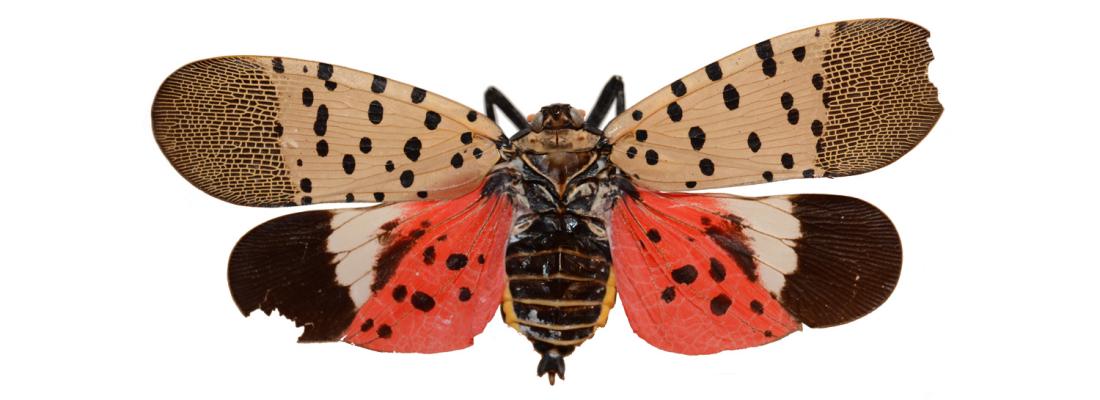Climate change and risks Reading time 2 min
The spotted lanternfly: a threat for Europe’s vineyards and orchards
Published on 28 November 2024

Recognizable by its bright colours, Lycorma delicatula, the spotted lanternfly, native to Asia has scientists worried. Although it hops more than it flies despite its two pairs of wings, this insect has already invaded South Korea, Japan and the United States. It has not yet been detected in Europe but experts fear that it will arrive. The spotted lanternfly feeds on a large number of plant species throughout its growth with a preference for the tree of heaven, Ailanthus altissima, an invasive tree native of Asia widely present in Europe. However it also attacks grapevines as well as apple, plum and peach trees and poplars. An invasion could lead to major damage to agriculture, particularly in orchards, forests and vineyards.
A recent study published by researchers from INRAE and ANSES in Agricultural and Forest Entomology shows that climate conditions and availability of host plants in Europe are favorable to the establishment of the spotted lanternfly. Analyses indicate that numerous regions in Europe have climate conditions which are ideal for this species. Moreover, climate change scenarios predict that this climate suitability will continue in the coming decades. The researchers have also studied the literature to evaluate the host species of L. delicatula present in Europe and draw up a list by country. By combining climate suitability and the availability of compatible host plants, they have assessed the establishment potential of the spotted lanternfly in Europe.
The spotted lanternfly travels short distances by walking or flying, but it is often transported accidentally over long distances by human activities, notably trade connections. Once it is established in a region, it is very difficult to eradicate. Strict surveillance is crucial to detect incursions as early as possible in order to act quickly. Using models and risk analyses, plant health authorities can target the most vulnerable areas and raise public awareness. In response to this threat, INRAE scientists have also developed a participatory science app to report its presence via the Ephytia platform.
Reference: Chartois, M., Fried, G. & Rossi, J.-P. (2024) Climate and host plant availability are favourable to the establishment of Lycorma delicatula in Europe. Agricultural and Forest Entomology, 1–13. Available from: https://doi.org/10.1111/afe.12665
